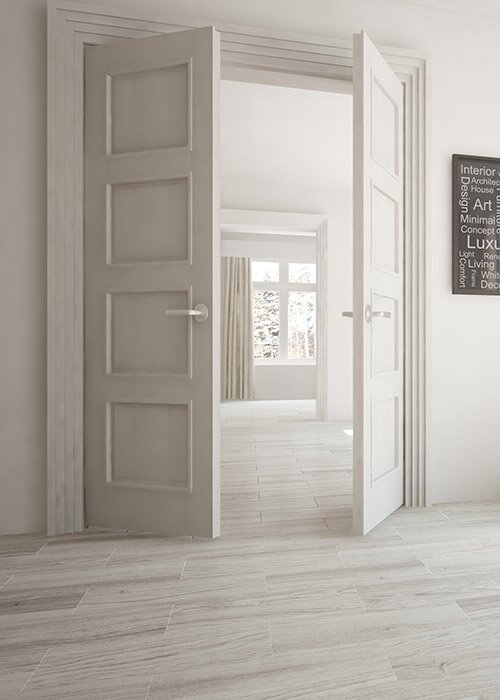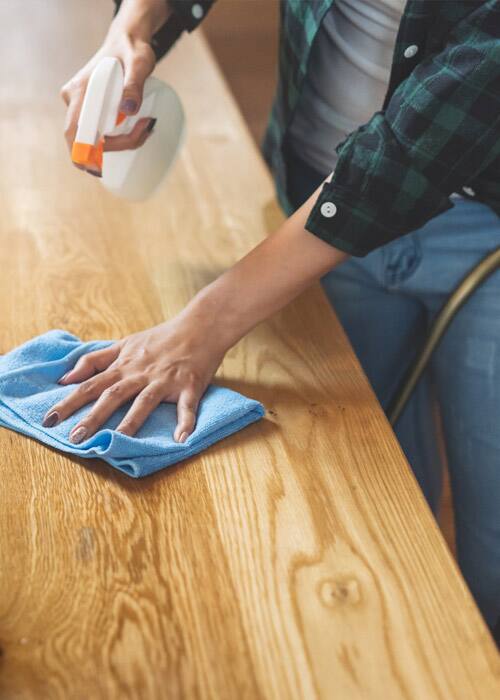Menu

When you buy a home with Shree Homes Inc. you not only get a property built with care and detail – you also get a partner in ensuring your home is in excellent functional condition for years to come. We care about our homes, and want you to enjoy your day-to-day living as stress free as possible. We have provided some simple maintenance tips and tricks, and resources for further reading. If you ever need emergency help or maintenance requests, please call us or fill out a maintenance request form.

Use a dry or slightly damp cloth to immediately wipe up anything you spill, avoiding wet or steam mops, which will cause more damage over time.
Because wood swells and shrinks depending on moisture, both on it and in the air, it is important to keep humidity levels down to avoid cupping, splitting, and gapping of the wood. The best way to prevent these issues are to clean up spills as soon as they occur, to keep your homes temperature between 60 and 80 degrees Fahrenheit (also between 30 o 50 percent humidity), and ban wet shoes from the house. They’re kind of gross, anyway.
Scratches are some of the toughest problems to solve in wood floors. While some scratches are inevitable, others are definitely preventable. One of the best ways to prevent them is to add furniture pads to the legs of your chairs, sofas, tables, etc.
It may seem excessive, but it is a recommendation. Even if you have a no-shoes rule in your home, dust forms everywhere and then settles into the grain and between floor boards. If you have furry friends around the house who never stop shedding, consider it a hygiene issue, too.

To clean cabinets, the best choice is soft cloths that are lint-free. Great types of clothes to use are soft cotton fabrics such as cheesecloth or chamois. An old tshirt also works well. Some fabrics may leave lint residue like old flannel shirts or old dish towels. The best option for cabinets are older materials that have been washed frequently and are softer.
TIP: Avoid using a used dishcloth or Sponge. They carry residue and chemicals that can damage the cabinet surface.
When cleaning your cabinets, use natural products that won’t scratch the cabinet finish or leave sticky residues. Avoid using any cleaning products that contain ammonia, and avoid abrasive cleaners such as powdered cleaners.
Mild, grease-cutting hand washing dish soap makes an ideal cabinet cleaner. You can make your own cabinet cleaning soap easily with ingredients you already have at home. Mix 2 tablespoons of dish soap into 2 cups of warm water. You can also use a mixture of vinegar and water. Apply the mild cleaning detergent of your choice to your cabinets using a soft cloth or sponge. For tough stains, some water spots respond to white toothpaste or baking soda. Use a non-abrasive wet sponge to clean the cabinet surface, while being careful not to scratch or otherwise damage the surface. Test the cleaner on the interior of the cabinet before you use it on the cabinet exterior for best results.
TIP: If using a commercial cleaning product, buy one made specifically for wood cabinets.

Avoid hanging wet dishcloths or towels over cabinets or cabinet doors, since long exposure to water will damage the finish and may leave stains. Use a hanging towel rack or consider washing and drying your dishcloths and towels with your laundry.
TIP: Dry wet dishcloths or towels in the dryer rather than leaving them to hang on cabinets or cabinet doors.
To keep cabinets looking their best, follow best basic care practices. Immediately clean up any spills, splatters, or water spots with a soft cloth. The sooner you spot clean, the less chance of staining or discoloring the cabinetry. Grease and food particles also become more difficult to remove over time.
TIP: Removing dried -on residue may require tough scrubbing and a harsh cleaner. Be careful not to damage the cabinet finish.
For a buffed shine on wood cabinets, use a furniture polish after cleaning. Polishes are usually applied using a soft cloth, then buffed to a shiny finish. Polishes contain mild detergents and emulsifiers to clean and shine wood cabinets and leave a protective coat of mineral oil.
TIP: To create a homemade polish, mix half a cup of olive oil with one tablespoon of lemon juice. Mix well and apply to wood cabinets with a cloth.
Use commercial furniture waxes, sprays, and polishes sparingly on kitchen cabinets. Spray polishes often contain silicone, which does form a shine, but can also create a barrier over the wood. This barrier makes touch ups or refinishing impossible. Waxes form a buildup over time, attracting dust, dirt, smoke, and pollutants from the air.
TIP: Wood doesn’t need oily polishes or cleaners to moisturize. If wood cracks or dries, it is a result of a lack of humidity in the air.
Keeping your home in tip-top shape saves you money in the long run and provides you peace of mind all year long.